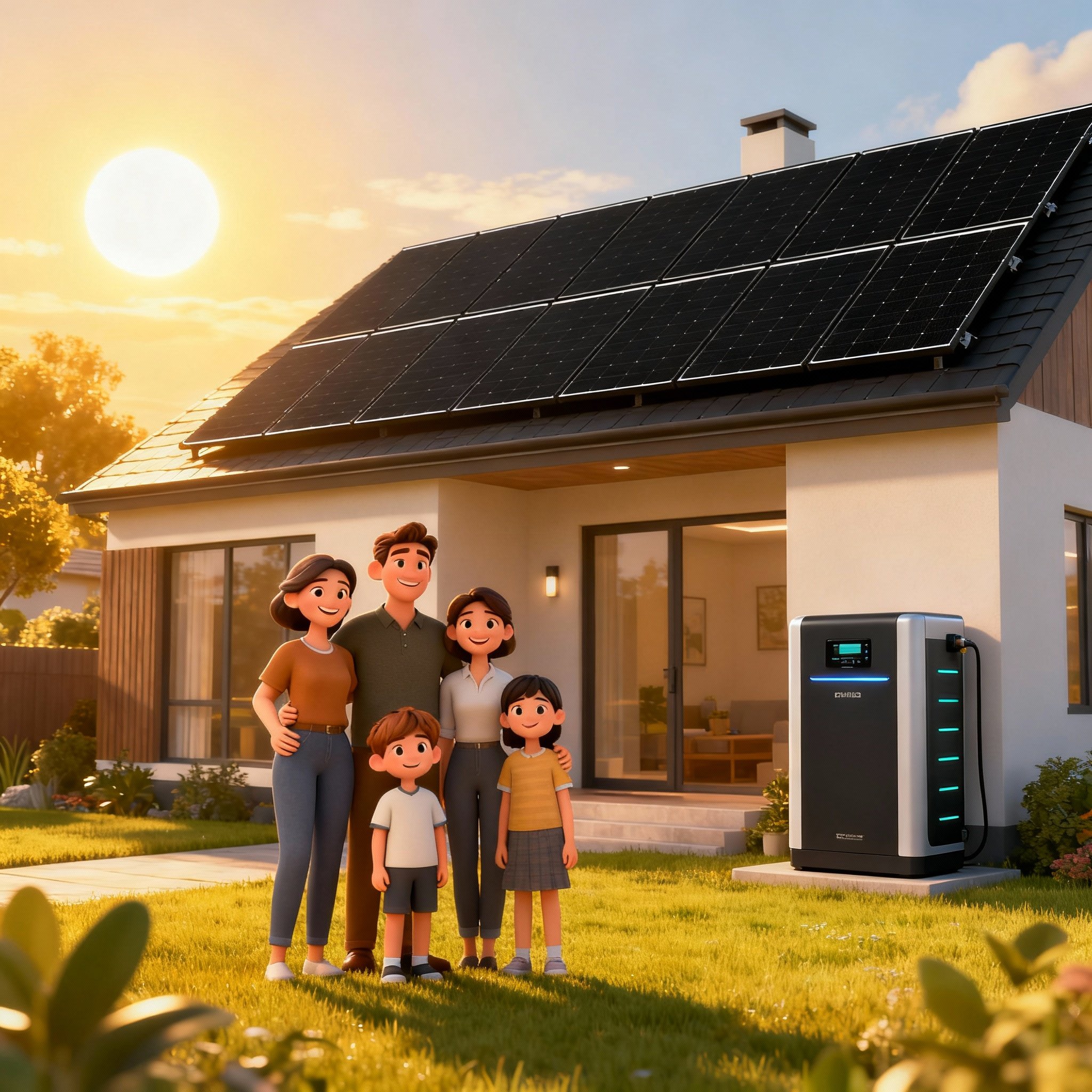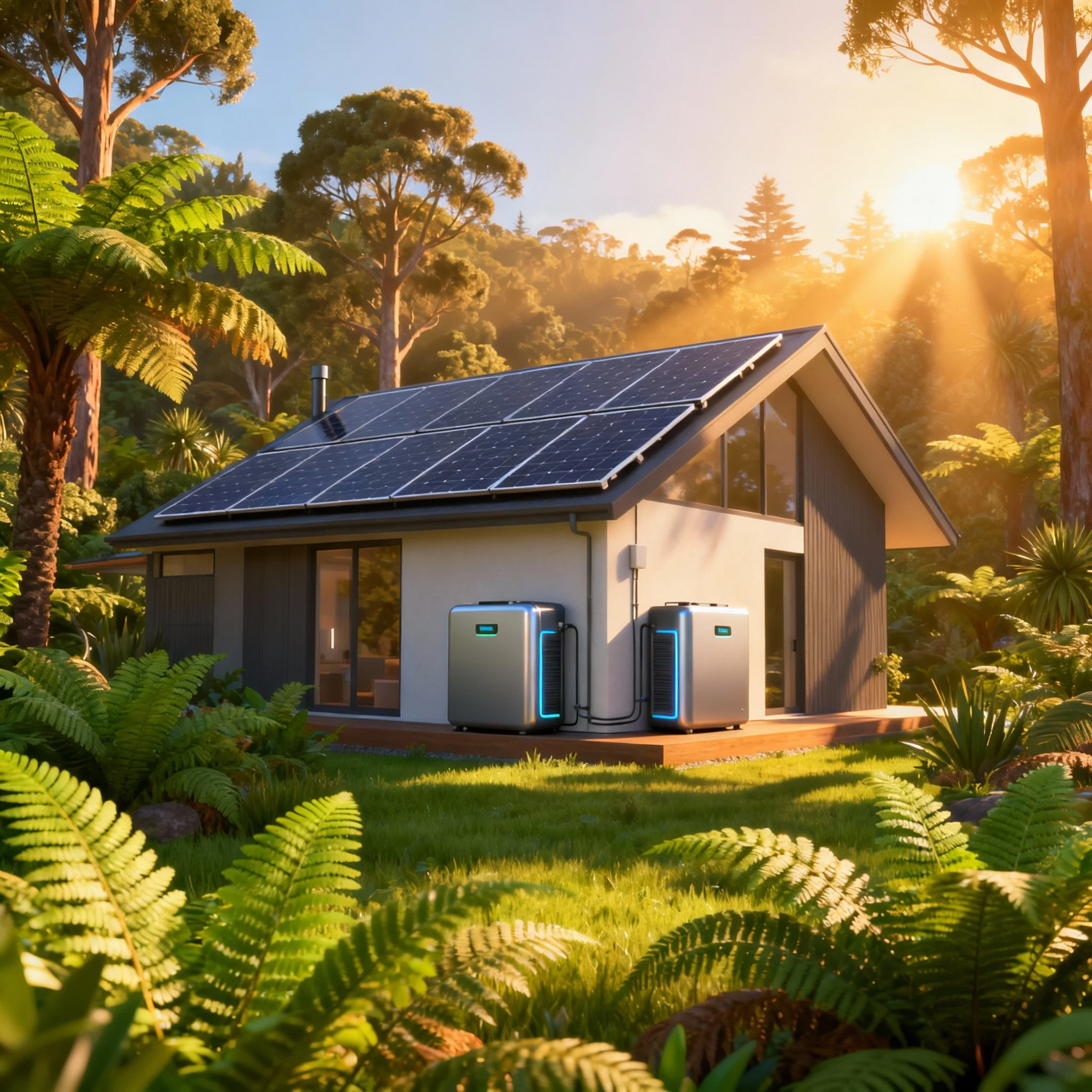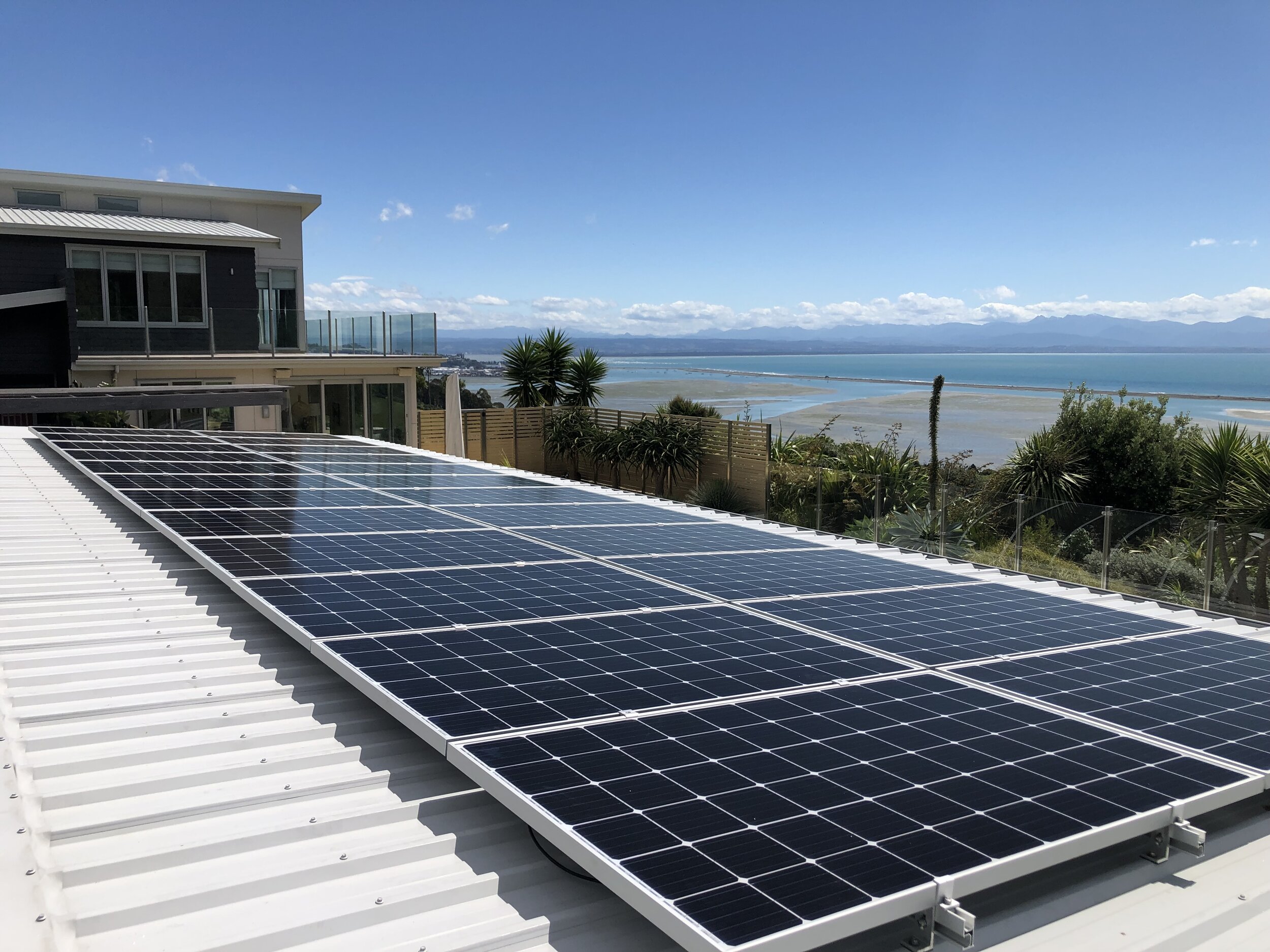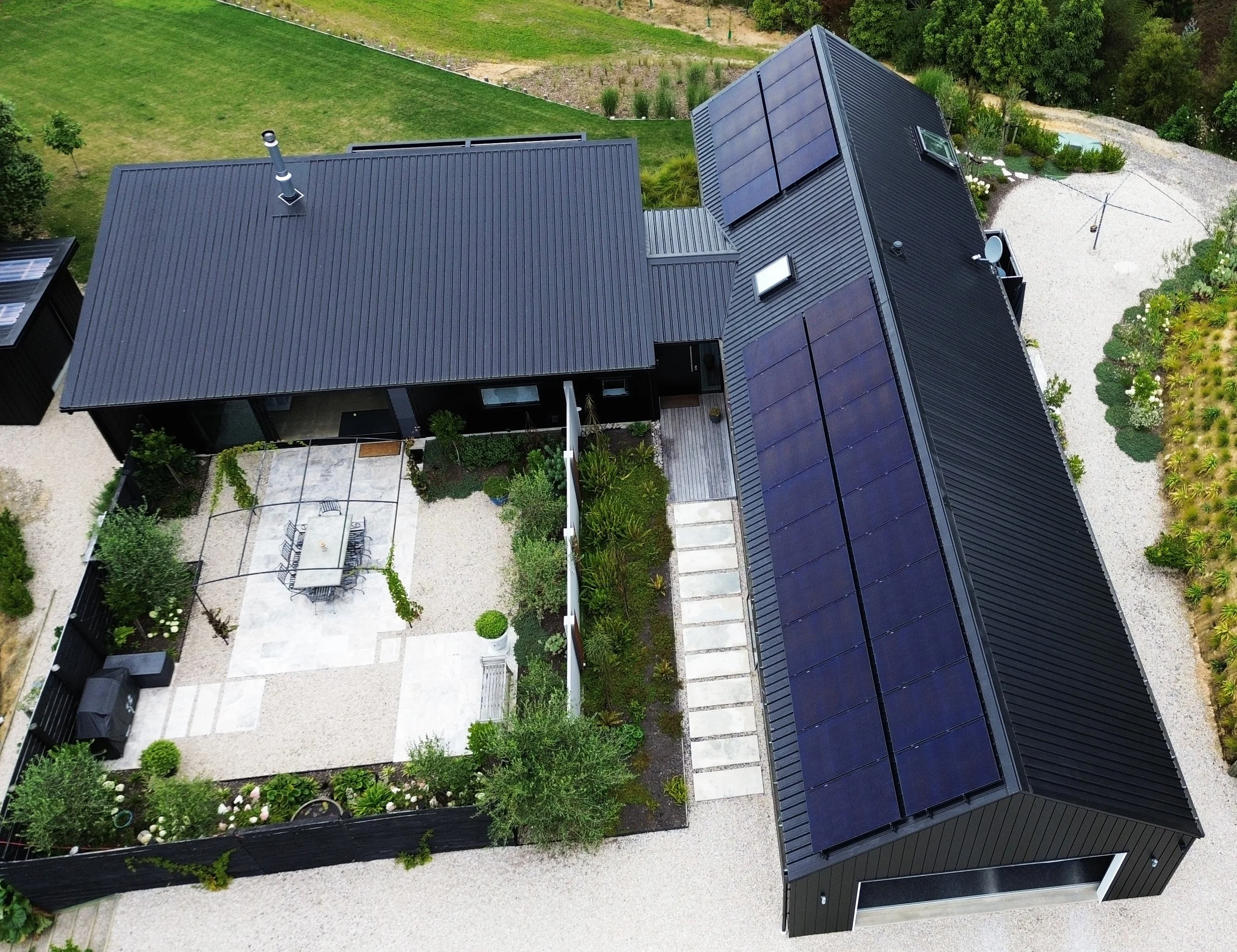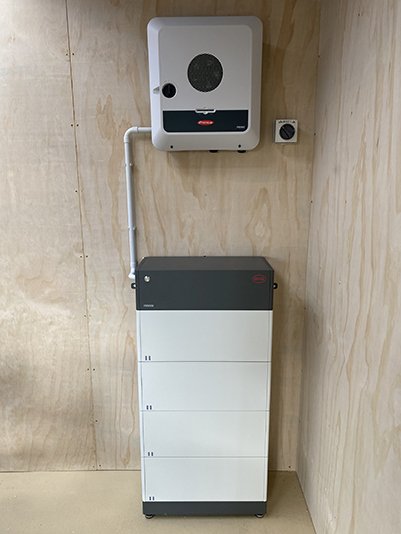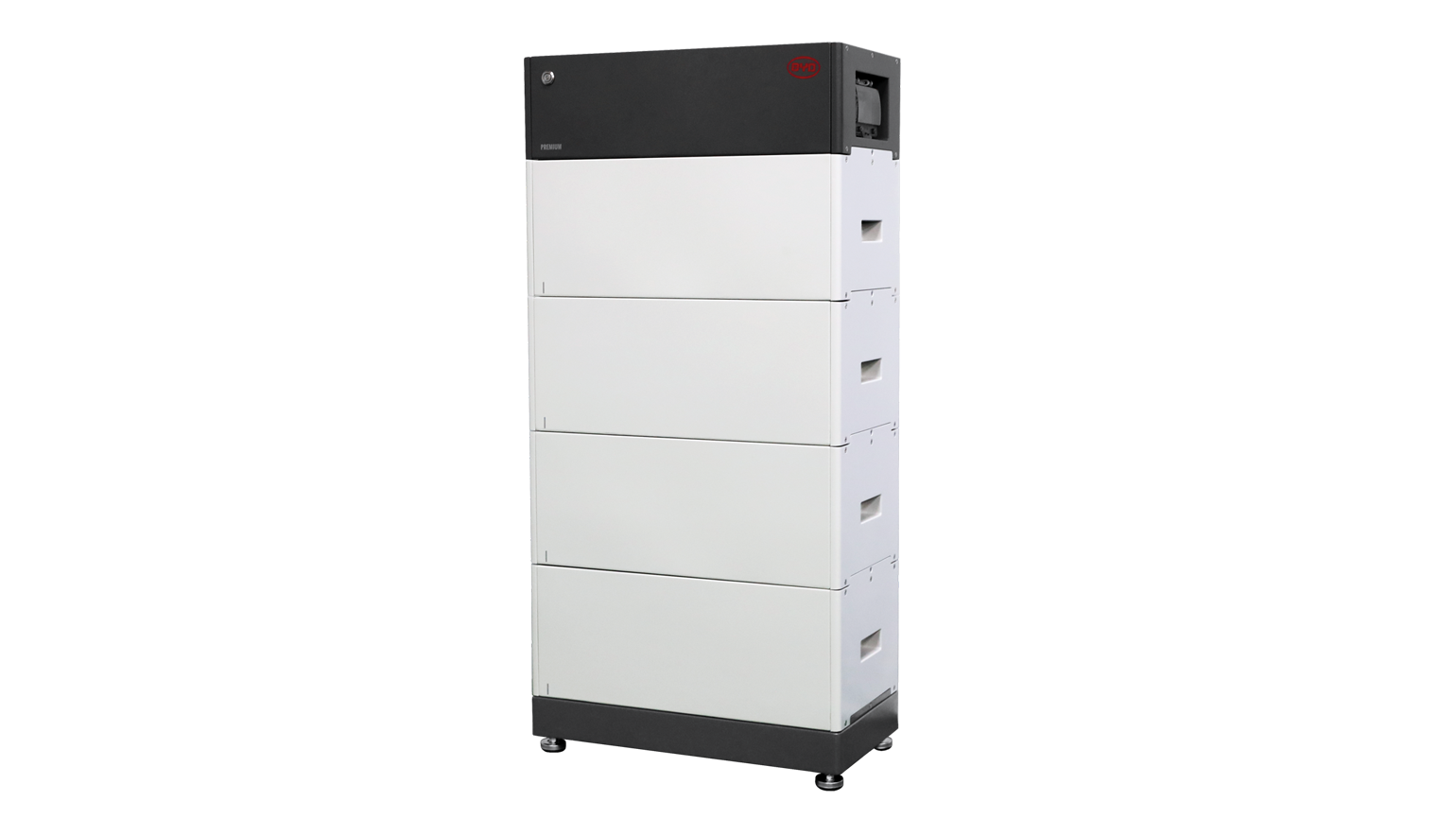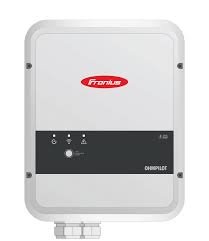
Residential Solar Power
There are three solar system options for your home or bach:
Grid-Connected Solar Power
Your solar system generates power when sunlight is available, which is used in your home. You use electricity from the grid when solar isn’t available or you need more. Any excess generation is sold back to the grid.
Hybrid Solar Power
Your solar system generates power when sunlight is available, which is used in your home. Any excess solar energy is stored in batteries for later use. You can still use electricity from the grid if and when you require it.
Off Grid Solar
You are not connected to the national power grid. You generate power with PV solar panels, wind, or micro-hydro if available, and store it in batteries. You may also have a generator as a backup.
Grid Connected Solar, Grid-Tied Solar, and On-Grid Solar all refer to the same type of solar-powered electrical system - one that is connected to the national electricity grid.
Most homes in New Zealand are connected to the national electricity grid, so most of the systems we install are grid-connected. Adding PV (photovoltaic) solar panels to your home can generate direct current (DC) energy from the sun. This energy is converted from DC electricity into AC (alternating current) electricity suitable for ordinary household use, by either a string inverter or micro inverters. Houses with grid-connected solar systems consume their free solar power first. Then, if more electricity is required than their solar system generates, the rest of the household's electricity needs are purchased from the grid. Any excess solar energy not required by the household can be sold to the grid.
4.74kWp Grid Connected system in Nelson
This is a standard sized family home in Nelson. The system includes the REC 395watt Alpha series solar panels and a Fronius string inverter.
9.48kWp Grid Connected system in Nelson
This is a large family home in Nelson with a large heated swimming pool. The system includes REC 395watt Twin Peak series solar panels and a 3 phase Fronius string inverter.
13.44kWp Grid Tie Solar System
This system was designed with future battery compatibility in mind. It features 32 x REC 420W Alpha Pure-R solar panels, connected to 2 x 6kW Fronius Gen24 Hybrid inverters. For precise monitoring and energy management, the system includes 2 Fronius Smart Meters.
The components of a grid connected solar system
Photovoltaic (PV) Solar panels
Photovoltaic solar panels are usually mounted on your roof and use the sun’s solar radiation to generate DC (Direct Current) electricity.
String inverters
The electricity travels to an inverter, usually located near the switchboard, which converts the electricity into 230 volts AC to be used in your home.
Micro inverters
Micro inverters also convert the direct current (DC) to alternating current (AC) for use in your home, but they are located on the individual PV solar panels.
Energy use management
We can set up energy use management for your home to help you use as much of your free solar energy within the household as possible.
A Hybrid Solar System is very much the same as a Grid Connected Solar system, with the addition of battery storage.
Most homes in New Zealand are connected to the national electricity grid. By adding PV (photovoltaic) solar panels to your home, you can generate direct current (DC) energy from the sun. This energy is then converted from DC electricity into AC (alternating current) electricity suitable for ordinary household use, by an inverter.
Houses with a Hybrid Solar System consume the solar power first, and any excess solar energy is then used to charge the battery bank. Once the battery bank is full, any excess solar energy can be sold to the grid. When there is little or no solar energy available, the household will draw energy from the battery bank. Once that is depleted, power will be purchased from the national electricity grid as usual. Another feature of our Hybrid Solar systems is the ability to provide energy to essential circuits during a power outage.
This hybrid system is on a large home with a 2-phase connection. We are using a Selectronic battery inverter on each of the phases with a combined lithium battery bank. In this situation, the grid is only used as a backup when required.
This is a Fronius Gen24 Hybrid Solar inverter, with a BYD HVM Lithium battery bank. With 4 battery modules this client has 11kWh of battery storage capacity.
This is a Sonnen all in one Solar Inverter and battery unit. The total capacity of the battery bank is 15kWh, all in a Sonnen outdoor enclosure.
The components of a hybrid solar system
Photovoltaic (PV) solar panels
Photovoltaic solar panels are mounted on your roof and use the sun’s solar radiation to generate DC (Direct Current) electricity.
Battery storage
Your battery bank stores any excess power for later use. Battery storage can be connected to your hybrid inverter. Some battery systems include their own inverter, which means they can be added to any existing solar system.
Hybrid Inverters
Fronius hybrid solar inverters can provide limited power in the event of a power outage, without batteries.
With batteries, the Fronius inverter will store energy for use when required, and during a power outage for essential circuits.
Energy management
Energy management systems such as the Fronius Ohmpilot (hot water diversion) and Fronius Wattpilot (EV diversion charger), divert excess solar within your home to maximise your self-consumption and ROI.
An Off-Grid Power system has no connection to the national electricity grid, which means that you are totally independent.
Most homes in New Zealand are already connected to the national electricity grid, so going off the grid would not usually make financial sense. If however, you are building a new home or require energy in a location without a grid connection, it could be worth investigating. An Off-Grid Power system consists of renewable energy generation, such as PV Solar Panels, Wind Generation, and Micro-Hydro. Inverters or controllers manage the energy which is either used directly by your loads or stored in batteries, the energy stored in your batteries is used when there is no renewable generation available, and a backup generator supports the system in times of high load or extended bad weather.
This is a tiny home in Nelson. The system includes the REC 395watt Alpha series solar panels and a Victon easy solar battery inverter/charger.
Standard Residential Off-Grid system
This is a standard sized family home in Marlborough. The system includes the REC 395watt Alpha series solar panels and a Fronius string inverter all managed by the Selectronic battery inverter/charger.
This is a Farm in Tasman where we have installed a 3 phase solar system with a Fronius solar inverter, Selectronic battery inverter/charger inverters and BYD Lithium batteries
The components of an off grid PV solar system
Photovoltaic (PV) Solar panels
Photovoltaic solar panels are usually mounted on your roof and use the sun’s solar radiation to generate DC (Direct Current) electricity.
Solar inverters
The solar energy travels to a solar inverter, which converts the electricity into 230 volts AC to be used in your home. This is called an AC-coupled solar system. We would use this type of system on standard and large off-grid installations.
Batteries
Excess solar energy is used to charge the battery bank, which is ready for use when there is limited or no solar energy available. There are various type of batteries available, generally we would recommend Lithium or Lead Carbon batteries.
Battery inverters
A battery inverter controls the energy in and out of the batteries. It is also the brain of the off-grid system, which means it will control your backup generator, and monitor your battery capacity and energy flow.


